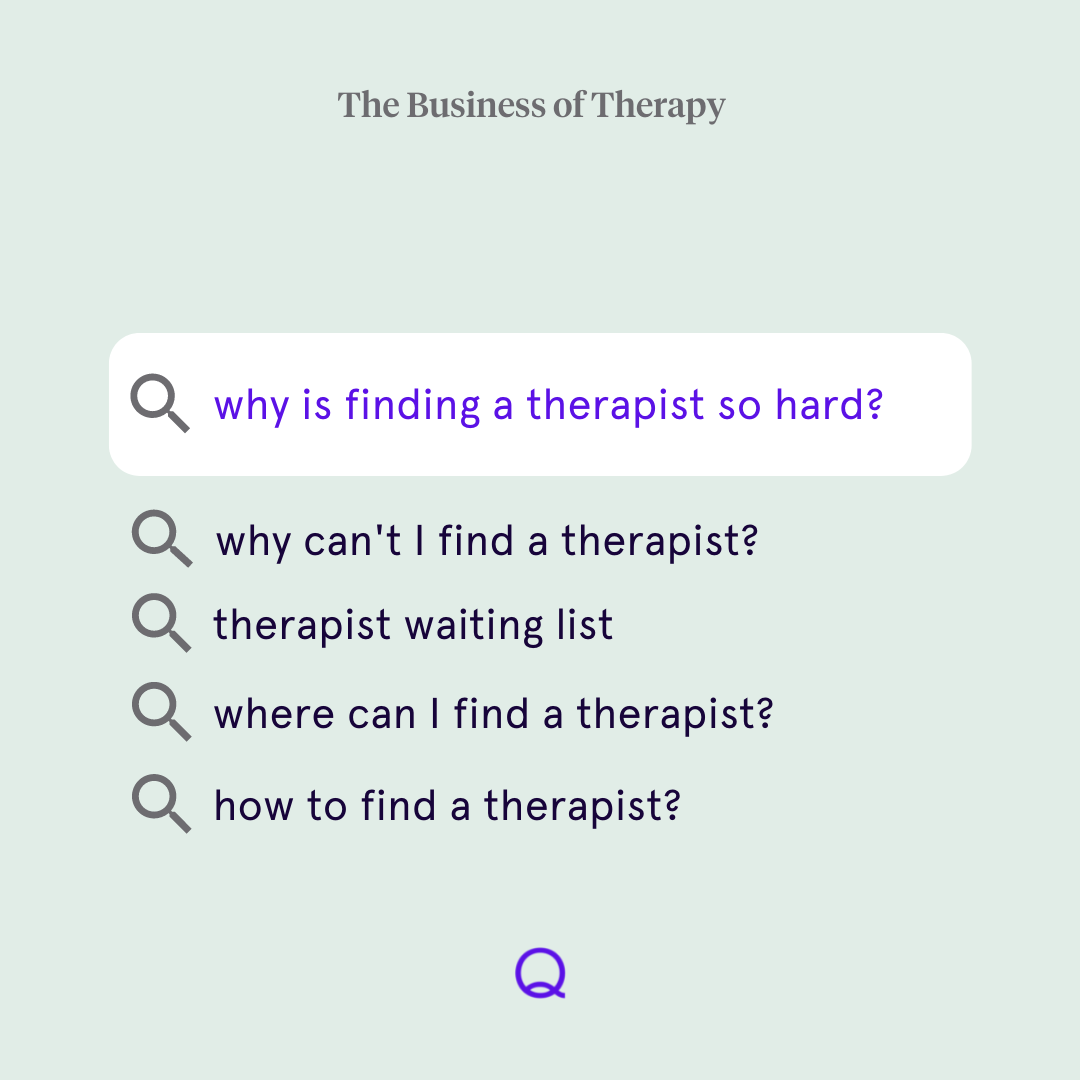Why Is It So Hard To Find A Therapist?

May 11, 2021
In our new series, The Business of Therapy, we set out to answer the most common questions about therapy, accessing care, and what it all means for your mental health. Questions like “why is it so hard to find a therapist who looks like me?” or “why is therapy so expensive?”. With interviews from professionals in the mental health space, we’re demystifying the business of therapy to help make accessing mental health care easier. In this issue, we’ll talk about one of the reasons it can be hard to find a therapist: a provider shortage.
How many patients does a doctor see in an hour?
If you’re like most people in the U.S., you probably don’t spend more than 15 minutes with your doctor during a regular visit before they run off to the next patient. Maybe even less. So the answer to that question is, most assuredly, several.
Most people don’t see their doctor on a weekly or even biweekly basis. Aside from annual exams, the standard is to only see your medical provider when something is wrong, or if you have an ongoing condition that needs to be monitored.
Now compare this to a therapist. Therapists only see one patient at a time (unless it is a couple or family counseling session). That means during an eight-hour workday (assuming they take an hour lunch), they have a limited amount of patients they can see in a day. Therapists also see patients on a recurring basis, with most having weekly appointments with their clients. A few may have slots reserved to see a patient every other week. A therapist’s caseload can also vary depending on their specialty and level of experience as well as how long a patient’s course of treatment is. Therapists who specialize in trauma-focused treatment may take on fewer patients in order to protect the therapist’s own mental health. However, a psychiatrist’s average caseload could be in the hundreds because they see their patients on a monthly or quarterly basis.
The longer sessions with your therapists make sense given that you need time to develop a relationship with your therapist so they can give you the space to share your story, diagnose you properly, and, in some cases, collaborate with your primary care doctor.
“In mental healthcare, our medical procedure is the time we spend with patients”, says Quartet’s Chief Mental Health Officer Robert Accordino. “No matter the course of treatment, the therapeutic alliance — the connection patients have with their therapist that allows them to be vulnerable and open — is essential for treatment to be effective. Forming that alliance takes time.”
Besides treating patients many therapists have other work obligations. According to a 2015 APA survey, nearly half of mental health workers are self-employed. This means in addition to treating a patient, some therapists may be responsible for their business operations including handling scheduling, billing, and dealing with a patient’s insurance company. So while other medical professionals may see hundreds if not thousands of patients each year, a typical therapist may have a caseload closer to 30–40.
This is all before we discuss the shortage of mental health providers. Known as mental health care deserts, these are places where accessing any mental health care, let alone quality care, is extremely difficult. In some states such as Mississippi and Nevada, for every 1,000 people, there’s only one mental health professional — whether it be a psychiatrist, psychologist, social worker, counselor, psychiatric nurse — available for them to see.
So we have therapists with a limited capacity combined with a severe shortage of mental health professionals. And then the COVID-19 pandemic hit. The pandemic brought with it a mental health crisis, one that has been brewing for quite some time. Therapists have taken on more patients to compensate for this rising need, and after over a year of guiding their patients through a tumultuous year, they’re burnt out.
One of the questions we often get is “I live in X state, why can’t I see a therapist in Z state over video conference?” Well, that’s a whole different story but our time is up and we’ll have to cover it in our next session. Join us in our next installation of The Business of Therapy where we’ll discuss why you can only see a provider in your own state and what will happen when telehealth waivers are lifted.
Explore more

Quality Mental Health Care, Wherever You Are
At Quartet, we know that mental health care isn’t one size fits all.

Take Your Own Advice: A Note to Therapists on Self Care During COVID‑19
COVID-19 added a layer of complexity for mental healthcare workers, who may be experiencing their own stressors and anxieties related to the crisis.

Fighting Two Pandemics: Supporting Domestic Violence Survivors and Their Mental Health Needs During COVID‑19
For some, following the stay-at-home orders for one pandemic may render them vulnerable to another: domestic violence.



